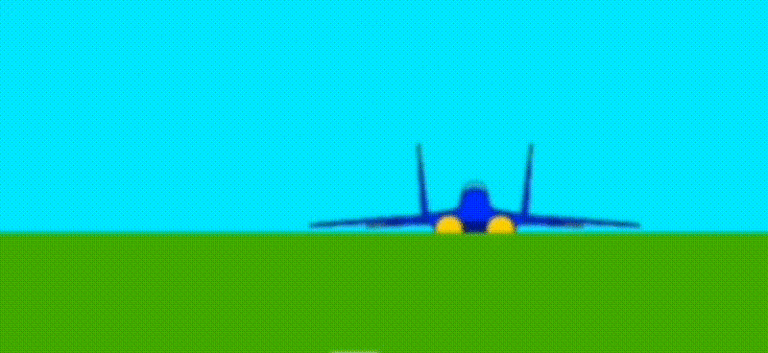NASA laser communications demonstrator sets record in outer space and completes first phase of testing

The deep space optical communications technology demonstrator has completed several key steps, sending a signal as far as the longest distance from Earth to Mars.
This summer, a deep space optical communications technology demonstrator broke another laser communications record, sending a laser signal from Earth to NASA's Psyche spacecraft some 460 million kilometers away. The same distance is obtained between our planet and Mars when the two planets are farthest from each other.
Shortly after reaching this milestone on July 29, the technology demonstration completed its first phase of operation following launch aboard Psyche on October 13, 2023.
“This is a very important milestone. Laser communications require a very high level of precision, and until Psyche launched, we didn't know how much performance would degrade at the longest distances,” says Mehra Srinivasan, project manager at NASA's Jet Propulsion Laboratory in Southern California. “Now the methods we use for tracking and targeting have been validated, confirming that optical communications can be a reliable and transformative way to explore the solar system.”
The Deep Space Optical Communications experiment, managed by JPL, consists of a flying laser transceiver and two ground stations. The historic 5-meter aperture Hale Telescope, located at the Palomar Observatory in California (San Diego County, California), serves as a station to which a laser transceiver sends data from deep space. The Optical Telescope Communications Laboratory at JPL's Mesa Complex near Wrightwood, California, serves as a communications station capable of transmitting 7 kilowatts of laser power to send data to a transceiver.
By transmitting data at 100 times the speed of radio communications, lasers can deliver the complex scientific information, as well as high-definition images and video needed for humanity's next giant leap as astronauts travel to Mars and beyond.
As for the spacecraft, Psyche remains healthy and stable, using ion propulsion to accelerate toward a metal-rich asteroid in the main asteroid belt between Mars and Jupiter.

Exceeding goals
Data collected from the technology demonstration is sent to and from Psyche as bits encoded in near-infrared light, which has a higher frequency than radio waves. This frequency allows more data to be packed into a single transmission, resulting in much faster data transfer rates.
Even when Psyche was at a distance of about 53 million kilometers, comparable to Mars' closest approach to Earth, the demonstration technology could transmit data at a maximum speed of 267 megabits per second. This data transfer speed is similar to the download speed of broadband Internet. As the spacecraft moves away, the speed of data transmission and reception decreases, as expected.
On June 24, when Psyche was about 390 million kilometers from Earth, more than 2.5 times the distance between our planet and the Sun, the project achieved a sustained data rate of 6.25 megabits per second, with a maximum speed of 8. 3 megabits per second. Although this speed is significantly lower than the maximum speed of the experiment, it is much higher than what a radio frequency communication system of comparable power can achieve at this distance.
These are tests
The goal of the Deep Space Optical Communications project is to demonstrate technology that can reliably transmit data at higher speeds than other space communications technologies, such as radio frequency systems. In an effort to achieve this goal, the project was able to test unique datasets such as artwork and high-definition video, as well as engineering data from the Psyche spacecraft. For example, one of the runs included digital versions of Arizona State University artwork.”Inspiration from Psyche“, images of the team's pets and a 45-second ultra-high-definition video that spoofs last century's television test circuits and depicts scenes from Earth and space.
This 45-second ultra-high-definition video was transmitted by laser from deep space as part of NASA's deep space optical communications technology demonstration on June 24, while the Psyche spacecraft was 240 million miles from Earth.
In a technology demonstration on December 11, 2023, the Psyche spacecraft transmitted the first ultra-high-definition video from space of a cat named Taters to Earth from 19 million miles away. (Artwork, images and videos were uploaded to Psyche and stored in its memory prior to launch.)
“The key goal of the system was to prove that the reduction in data rate is proportional to the inverse square of the distance,” says Abi Biswas, technology demonstration project technologist at JPL. “We achieved this goal and transmitted a huge amount of test data to and from the Psyche spacecraft using laser.” During the first phase of the demonstration, nearly 11 terabits of data were transferred.
The flight transceiver is turned off and will be turned on again on November 4th. This work will prove that flight equipment can operate for at least a year.
“We'll turn on the laser transceiver and do a short test of its functionality,” said Ken Andrews, project flight director at JPL. “Once this is done, we can look forward to operating the transceiver to its full design capabilities during the post-interconnect phase, which will begin later this year.”
Read more about optical communications in deep space
This demonstration is the latest in a series of optical communications experiments funded by the Space Technology Directorate's Demonstration Mission Program at NASA's Marshall Space Flight Center in Huntsville, Alabama, and the Space Communications and Navigation (SCaN) program within the Office of Space Operations. . The flight laser transceiver is being developed with support from MIT Lincoln Laboratory, L3 Harris, CACI, First Mode, and Controlled Dynamics Inc. Ground systems are supported by Fibertek, Coherent, Caltech Optical Observatories and Dotfast. Some of the technologies were developed through NASA's Small Business Innovation Research program.





